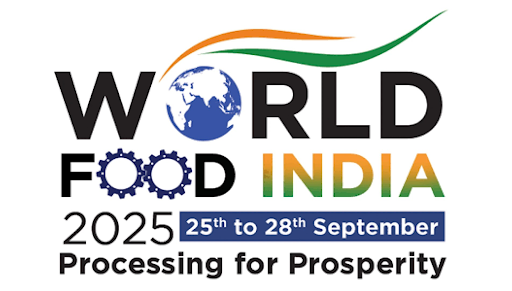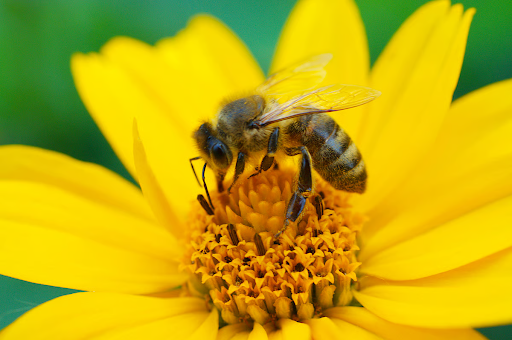





Disclaimer: Copyright infringement is not intended.
Union Minister of Textiles unveiled the Commemorative coin, celebrating the Platinum Jubilee of the Central Silk Board (CSB) at Mysore on 20th Sep 2024.
Innovative technologies like Nirmool and Seri-win were launched which address critical challenges such as pest management, promoting sustainable practices, and increasing productivity.
Educational resources were released during the event to empower farmers with essential knowledge.
CSB signed MoUs with institutions like ICAR-CIFRI and Jain University to facilitate collaborative research and training initiatives.
There is a need for the creation of a platform for utilising sericulture waste in animal feed, pharmaceuticals, and medical applications.
There is also a need to strengthen market facilities in sericulture states and stabilize cocoon prices while reducing the influence of middlemen to increase farmers' margins.
The government should provide for subsidies on sericulture components, along with adjustments to unit costs in line with market inflation.
The government should introduce more new mulberry varieties and silkworm hybrids which are crucial for enhancing silk production, particularly in Eastern and Northeastern India where eri silk is mostly cultivated.
There should be a strategic approach to enhance infrastructure, market access, and resource availability for sericulture farmers to create a supportive ecosystem for their growth, ultimately aiming to uplift livelihoods and strengthen India’s position in the global silk market.
Indian silk Industry has been covered in detail in the following article read in here:
The nation now ranks as the second-largest silk producer worldwide.
Its share of global production jumped from 6% in 1949 to 42% in 2023.
Raw silk production has increased from 1,242 metric tonnes in 1949 to 38,913 metric tonnes in 2023-24.
Efficiency improvements are evident, as renditta has decreased from 17 in 1949 to 6.47 in 2023-24.
|
In sericulture, Renditta is the number of silk cocoons needed to produce one kilogram of yarn. A lower renditta indicates that the cocoon produces higher quality yarn. |
Productivity per hectare of mulberry plantations has risen from 15 kg to 110 kg.
Silk exports have experienced remarkable growth, with earnings increasing from ₹0.41 crores in 1949-50 to ₹2,028 crores in 2023-24 and reaching over 80 countries.
For more on silk types, distribution etc, please refer:
https://www.iasgyan.in/daily-current-affairs/silk
It was set up based on the recommendations of the Silk Panel by the Imperial Govt. on 8th March 1945 to examine the development of the silk industry.
The Government of Independent India enacted the CSB Act 1948 on 20th September 1948.
Accordingly, the Central Silk Board (CSB), a statutory body, was set up under an Act of Parliament (LXI) of 1948 to shape the Sericulture Industry on 9th April 1949.
The Central Silk Board (CSB) is the sole organisation for comprehensive sericulture Research & Development (R&D) and coordinates development programs across 26 States/UTs.
The Central Silk Board has proudly marked 75 years of dedicated service to advancing India’s silk industry.
These mandated activities of the Central Silk Board are being carried out by the 159 units of CSB located in different States.
CSB’s R&D institutes have played a pivotal role in developing over 51 silkworm hybrids tailored to different regions and seasons, 20 high-yielding varieties of host plants, and more than 68 patented technologies.
Due to CSB’s R&D effort, the country has started manufacturing Indigenous Automatic Reeling Machines, which were earlier imported from China.
The work of CSB has led to improvement in silk production, providing valuable tools and techniques for farmers and stakeholders to enhance both quality and yield.
Sources:
https://pib.gov.in/PressReleasePage.aspx?PRID=2058721
https://www.indiantradeportal.in/vs.jsp?lang=0&id=0,31,24100,24118
|
PRACTICE QUESTION Q.Consider the following statements about the “Spotted deer” recently seen in the news:
How many of the above statements is/are correct? A. Only one B. Only two C. All Three D. None Answer: A Explanation: Statement 1 is incorrect: India now ranks as the second-largest silk producer worldwide. Raw silk production has increased from 1,242 metric tonnes in 1949 to 38,913 metric tonnes in 2023-24. Efficiency improvements are evident, as renditta has decreased from 17 in 1949 to 6.47 in 2023-24. Productivity per hectare of mulberry plantations has risen from 15 kg to 110 kg. S Silk exports have experienced remarkable growth, with earnings increasing from ₹0.41 crores in 1949-50 to ₹2,028 crores in 2023-24 and reaching over 80 countries. Statement 2 is incorrect: India’s share of global production jumped from 6% in 1949 to 42% in 2023. Statement 3 is correct: Productivity per hectare of mulberry plantations has risen from 15 kg to 110 kg. S Silk exports have experienced remarkable growth, with earnings increasing from ₹0.41 crores in 1949-50 to ₹2,028 crores in 2023-24 and reaching over 80 countries. |




© 2025 iasgyan. All right reserved